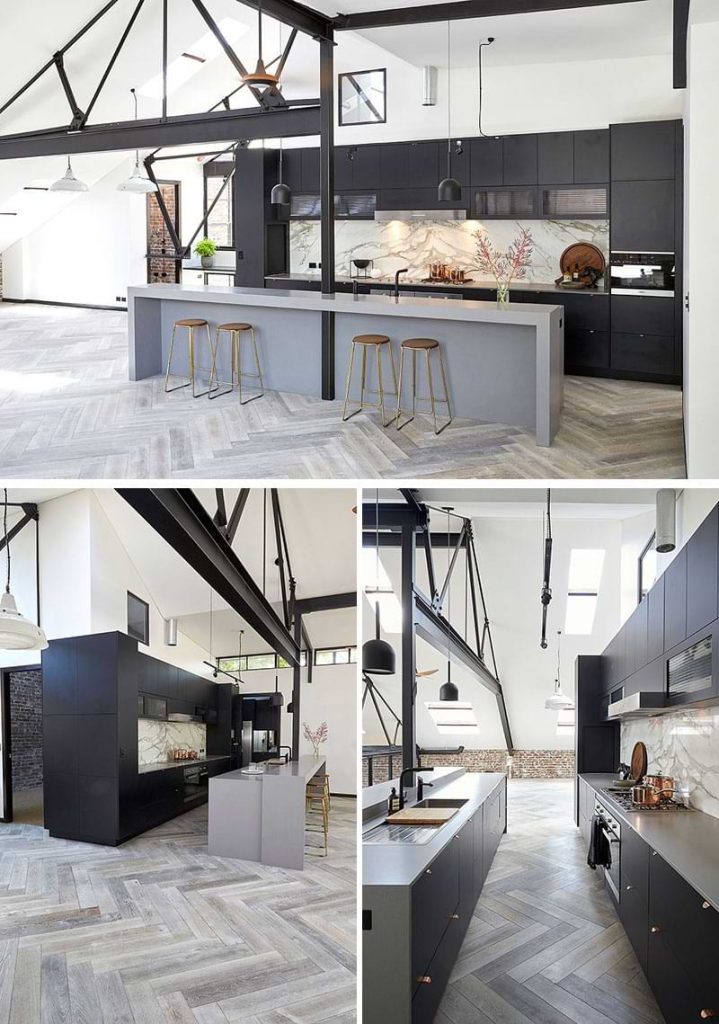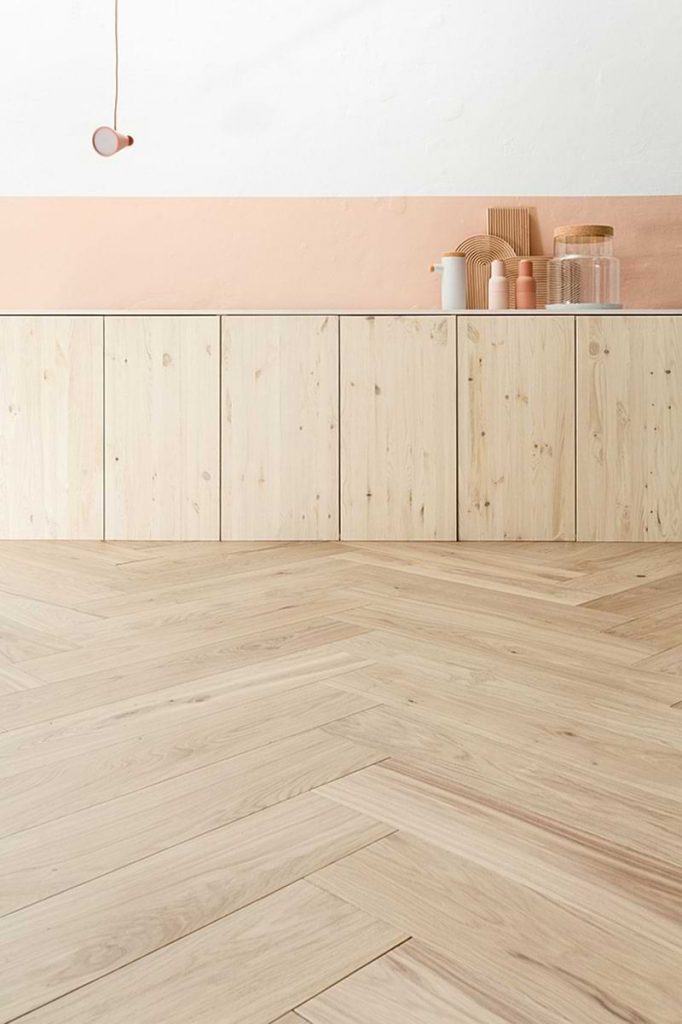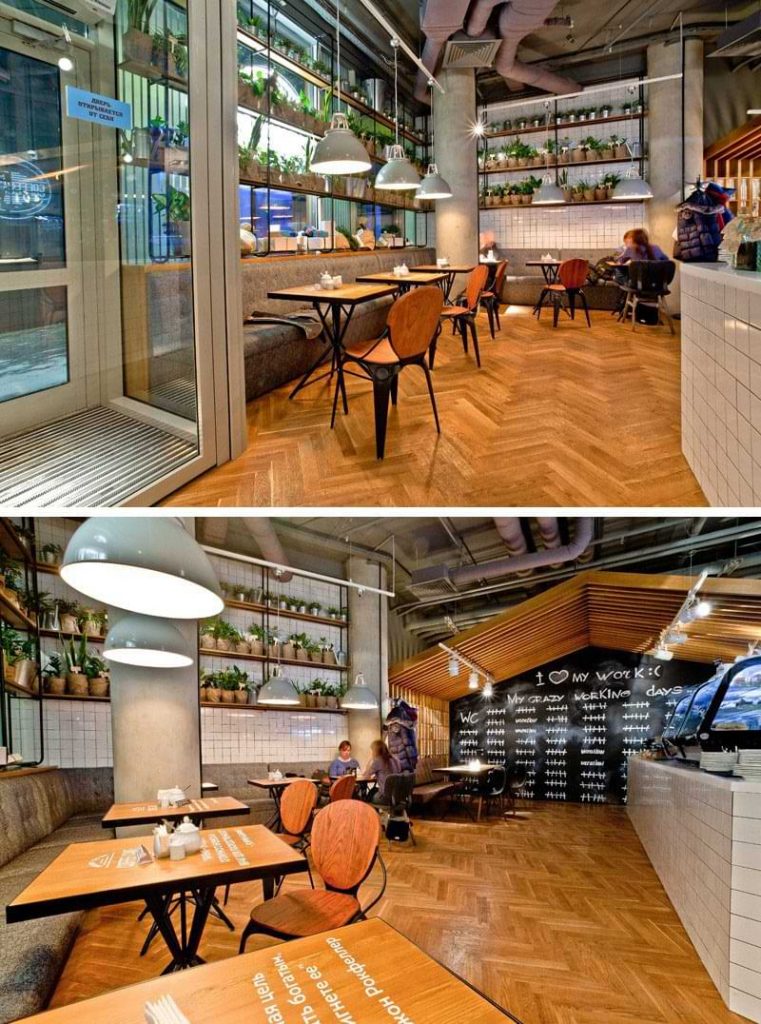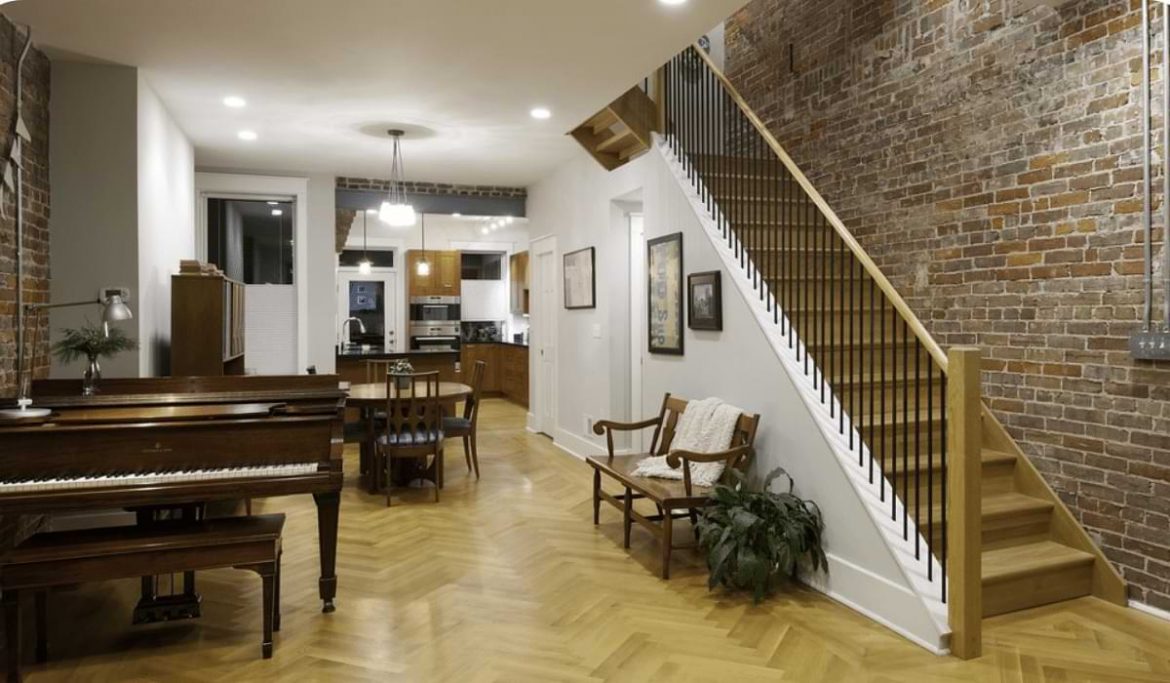Table of Contents
You probably have some ideas about what your dream kitchen layout should look like. For example, maybe you want a traditional design with a double oven and plenty of counter space.
Or perhaps you’d prefer something more modern, with all-digital appliances and an open layout. Regardless of your style, there is almost certainly one thing that every homeowner can agree on: the desire for an open floor plan.
A kitchen herringbone floor design is ideal for creating an open layout in any homeroom, including the kitchen.
Let’s examine some pros and cons of a kitchen herringbone floor to see if it’s right for you.
What is a Kitchen Herringbone Floor?
A herringbone floor is a type of layout consisting of tile strips arranged in a specific pattern, often with no grout lines. This gives the appearance of a finished stone tile pattern. The name comes from how Harlingen was used to make herringbone patterns on stairs and other surfaces back in medieval times.
Pros:
- Creates an open floor plan
- Creates visual interest
- Adds character to the space
- Protects walls and floors from damage
- Easy to maintain
Cons:
- It May require prepping large areas before installation
- Difficult to find contractors who can install this type of design
What is a kitchen herringbone floor made of?
A kitchen herringbone floor is made of ceramic or porcelain tiles laid in a diamond pattern.
The tiles are small and square, making them the perfect size for installation on top of baseboards and cabinets.
The diamond-shaped pattern gives a unique look, unlike any other floor design.
How to find the right herringbone for your kitchen
The first step in finding the right herringbone for your home is to decide on a layout. This can be a difficult decision, as you’ll have to weigh the pros and cons of each design.
After deciding which layout you want, you should consider wood planks and metal tiles.
Tile will offer an easy-to-clean surface that is durable and water-resistant. Wood planks will require more maintenance but are aesthetically appealing.
Which colors match with kitchen herringbone floors?
You can pair Herringbone floors with a variety of colors, but typically complementary shades are used to create the most visually appealing contrast. For example, earthy tones like beige, brown, and green often look good with herringbone floors, as do light neutrals like white and light gray. Here are a few more ideas for that as well.
- A light beige or gray herringbone floor with deep red or navy walls
- A black herringbone floor with pale yellow or white walls
- A soft green floor with dark red walls
- A navy floor with a pale yellow wall.
What else is needed to create a herringbone floor?
To create a herringbone floor, you’ll need premade squares, which You can purchase from home improvement stores or online. These premade squares come in different colors and patterns, and you will use them to cover your kitchen floor. Once your herringbone floor is done, you can paint the squares to match your décor.
To make your flooring permanent, you’ll also need tile adhesive and grout. This will help prevent any water damage if accidents happen during cooking or cleaning up spills. The bond is applied to each square before laying it on the floor and when it dries, it holds the pieces together at their corners.
If you want to add extra drama to your herringbone floor, you can add a contrasting design in the center of your kitchen. There are countless possibilities for these designs – check out the CONTEMPORIST gallery below for inspiration!






Frequently Asked Questions
Are herringbone floors trendy?
Herringbone floors are definitely trendy right now! They add a touch of elegance and sophistication to any space. Plus, they’re very versatile and can be used in both traditional and modern homes. If you’re looking to give your home a stylish update, herringbone floors are a great option!
Are herringbone floors worth the extra money?
Herringbone floors are definitely worth the extra money, as they are much more durable and attractive than other types of flooring. They can be a bit more expensive to install, but they will last much longer than other options.
Why is herringbone flooring so popular?
Herringbone flooring is popular because it is a stylish and unique way to add texture and interest to a room. The pattern is eye-catching and can add a touch of elegance to any space. Additionally, herringbone flooring is very durable and can last for many years with proper care.
What does a Herringbone pattern look like?
A herringbone pattern is a type of V-shaped geometric pattern that is often used in flooring, fabric, and wallpaper. The pattern gets its name from the resemblance of its shape to the skeleton of a herring fish.
Why should I choose Herringbone flooring?
There are a few reasons why you might want to choose herringbone flooring for your home.
- One is that it can be very stylish and elegant, making a strong visual statement in any room.
- It’s also a very practical choice since the herringbone pattern helps to disguise dirt and wear and tear.
- Plus, it’s easy to keep clean and maintain.
Does Herringbone floor make a room look bigger?
It depends on the specific room and layout. In general, however, a herringbone floor can make a room look slightly larger due to the elongated pattern. This effect can be further enhanced by using light-colored wood such as oak or ash.
Where can I use Herringbone flooring?
Herringbone flooring can be used in a variety of locations, including:
- Hallways
- Kitchens
- Living Rooms
- Dining Rooms
- Bathrooms
- Libraries
- Offices
What’s the difference between herringbone and parquet?
Herringbone is a type of wood flooring that is created by installing planks of wood at a 45-degree angle to the neighboring planks in a chevron pattern.
While Parquet is a type of wood flooring that is created by installing small squares of wood in a geometric pattern.
Conclusion
Overall, the pros to a kitchen herringbone floor are its durable, eye-catching, and modern-looking design that works well with multiple styles and houses.
The cons to a herringbone floor are that it is a pricey installation because of the required labor. You must understand your budget before deciding on this type of floor because there are many levels involved in this process.
Prefer to use a different design on your floors? No problem! There are plenty of other floorings.
